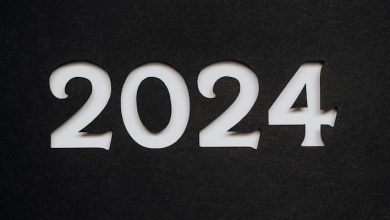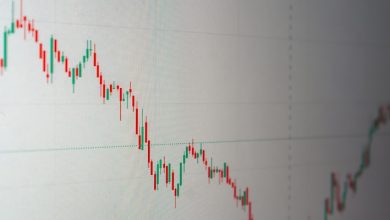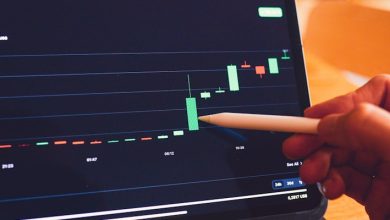Using Candlestick Patterns to Anticipate Price Movements

- Introduction to Candlestick Patterns
- Understanding the Psychology Behind Candlestick Patterns
- Common Candlestick Patterns and Their Meanings
- How to Incorporate Candlestick Patterns into Your Trading Strategy
- Using Candlestick Patterns to Predict Market Reversals
- Practical Examples of Candlestick Patterns in Action
Introduction to Candlestick Patterns
Candlestick patterns are a popular tool used by traders to anticipate price movements in the financial markets. These patterns are formed by the open, high, low, and close prices of an asset within a specific time frame, typically represented in a candlestick chart. By analyzing the shape and color of these candlesticks, traders can gain insights into market sentiment and potential future price direction.
Candlestick patterns can be categorized into two main types: reversal patterns and continuation patterns. Reversal patterns indicate a potential change in the current trend, while continuation patterns suggest that the existing trend is likely to persist. Some common candlestick patterns include doji, hammer, engulfing, and shooting star.
Understanding candlestick patterns can help traders make more informed decisions when entering or exiting trades. By recognizing these patterns and their corresponding signals, traders can better anticipate potential price movements and adjust their trading strategies accordingly. It is important to note that while candlestick patterns can provide valuable insights, they should be used in conjunction with other technical analysis tools for a more comprehensive trading approach.
Understanding the Psychology Behind Candlestick Patterns
Candlestick patterns are essential tools for traders to understand market psychology and anticipate potential price movements. By analyzing the various shapes and formations that candlesticks create on price charts, traders can gain insight into the emotions and behaviors driving market participants.
One of the key concepts behind candlestick patterns is the idea that price movements are not purely random but are influenced by human psychology. For example, a long bullish candlestick indicates strong buying pressure and optimism among traders, while a long bearish candlestick suggests heightened selling pressure and pessimism.
Patterns such as doji, hammer, engulfing, and harami provide valuable information about market sentiment and potential trend reversals. Traders who can interpret these patterns accurately may be able to make more informed trading decisions and capitalize on price movements before they occur.
Understanding the psychology behind candlestick patterns involves recognizing patterns that indicate indecision, exhaustion, or continuation of trends. By studying these patterns in combination with other technical indicators, traders can develop a more comprehensive view of market dynamics and improve their ability to predict future price movements.
In conclusion, mastering the psychology behind candlestick patterns is a crucial aspect of successful trading. By recognizing the emotional and behavioral factors that drive market movements, traders can gain a competitive edge and enhance their ability to anticipate price changes effectively.
Common Candlestick Patterns and Their Meanings
Candlestick patterns are important tools used by traders to analyze price movements in the financial markets. By understanding these patterns and their meanings, traders can anticipate potential price movements and make informed trading decisions. Here are some common candlestick patterns and what they typically indicate:
- Doji: A doji candlestick pattern forms when the opening and closing prices are virtually the same. This pattern suggests indecision in the market and can signal a potential reversal.
- Hammer: The hammer pattern has a small body with a long lower wick. It indicates that sellers pushed the price lower during the session, but buyers were able to push it back up, signaling a potential reversal to the upside.
- Engulfing: An engulfing pattern occurs when a larger candle completely engulfs the previous candle. This pattern suggests a change in sentiment, with buyers or sellers taking control of the market.
- Dark Cloud Cover: The dark cloud cover pattern is formed by a bearish candle that opens above the previous day’s high and closes below the midpoint of the previous day’s body. This pattern indicates a potential reversal to the downside.
- Morning Star: The morning star pattern is a bullish reversal pattern that consists of three candles. The first candle is bearish, followed by a small-bodied candle, and then a bullish candle that gaps up from the second candle.
These are just a few examples of the many candlestick patterns that traders use to analyze price movements. By recognizing these patterns and understanding their meanings, traders can gain valuable insights into market trends and potential trading opportunities.
How to Incorporate Candlestick Patterns into Your Trading Strategy
One effective way to enhance your trading strategy is by incorporating candlestick patterns. These patterns can provide valuable insights into potential price movements, helping you make more informed decisions when buying or selling assets. Here are some tips on how to integrate candlestick patterns into your trading approach:
- Familiarize yourself with the most common candlestick patterns, such as doji, hammer, shooting star, and engulfing patterns. Understanding these patterns will allow you to recognize them quickly when analyzing price charts.
- Look for candlestick patterns in conjunction with other technical indicators, such as moving averages or RSI, to confirm potential price reversals or continuations. This can help reduce false signals and increase the accuracy of your trades.
- Practice identifying candlestick patterns on historical price charts to improve your pattern recognition skills. The more you practice, the better you will become at spotting these patterns in real-time trading situations.
- Use candlestick patterns to set entry and exit points for your trades. For example, if you spot a bullish engulfing pattern after a downtrend, consider entering a long position to take advantage of a potential price reversal.
- Monitor the overall market sentiment in conjunction with candlestick patterns to gauge the strength of a particular pattern. Strong bullish patterns in a bullish market are more likely to lead to successful trades.
- Keep a trading journal to track the performance of your trades based on candlestick patterns. This can help you identify which patterns work best for your trading style and make adjustments to your strategy accordingly.
By incorporating candlestick patterns into your trading strategy, you can gain a deeper understanding of market dynamics and improve the overall profitability of your trades. Remember to combine these patterns with other technical tools and to practice regularly to enhance your pattern recognition skills.
Using Candlestick Patterns to Predict Market Reversals
When it comes to predicting market reversals, candlestick patterns can be a valuable tool for traders. By analyzing the formations of candlesticks on price charts, investors can gain insight into potential changes in market direction. These patterns can provide signals that indicate when a trend may be losing momentum and about to reverse.
One of the most popular candlestick patterns used to predict market reversals is the “hammer” pattern. This pattern consists of a small body with a long lower shadow, indicating that sellers pushed the price lower during the trading session but were ultimately unable to maintain control. The presence of a hammer pattern at the end of a downtrend can signal a potential reversal to the upside.
Another common candlestick pattern that traders look for is the “engulfing” pattern. This pattern occurs when a smaller candlestick is completely engulfed by the following candlestick. An engulfing pattern at the end of a trend can indicate a shift in market sentiment, with buyers or sellers taking control and potentially leading to a reversal in price direction.
By studying and recognizing these and other candlestick patterns, traders can anticipate potential market reversals and adjust their trading strategies accordingly. It is important to note that while candlestick patterns can be powerful indicators, they should be used in conjunction with other forms of technical analysis to confirm signals and make informed trading decisions.
Practical Examples of Candlestick Patterns in Action
Let’s look at some practical examples of candlestick patterns in action to see how they can help anticipate price movements in the financial markets. These examples will demonstrate how different candlestick patterns can provide valuable insights into market sentiment and potential future price movements.
- One common candlestick pattern is the “hammer,” which indicates a potential reversal in a downtrend. When a hammer pattern forms after a prolonged decline, it suggests that buyers are stepping in to push prices higher. Traders may interpret this as a signal to enter long positions in anticipation of a bullish reversal.
- Another useful pattern is the “doji,” which occurs when the open and close prices are very close to each other. A doji signifies indecision in the market, with neither buyers nor sellers in control. Traders may use this pattern to anticipate a potential trend reversal or a period of consolidation.
- The “engulfing pattern” is a strong reversal signal where a large candle “engulfs” the previous smaller candle. This pattern suggests a shift in market sentiment, with the potential for a new trend to emerge. Traders often use engulfing patterns to enter trades in the direction of the new trend.
- Lastly, the “morning star” pattern is a three-candle formation that signals a potential reversal from a downtrend to an uptrend. The morning star pattern consists of a large bearish candle, followed by a small-bodied candle or doji, and then a large bullish candle. Traders may view this pattern as a signal to go long and anticipate a bullish trend reversal.
By studying and recognizing these different candlestick patterns, traders can gain valuable insights into market dynamics and make more informed trading decisions. While no pattern guarantees success, understanding these patterns can help traders anticipate potential price movements and manage risk more effectively.



